The Ferdinand Berthoud Edition 1785 – 5 Unique Pieces with Patinated Bronze Cases
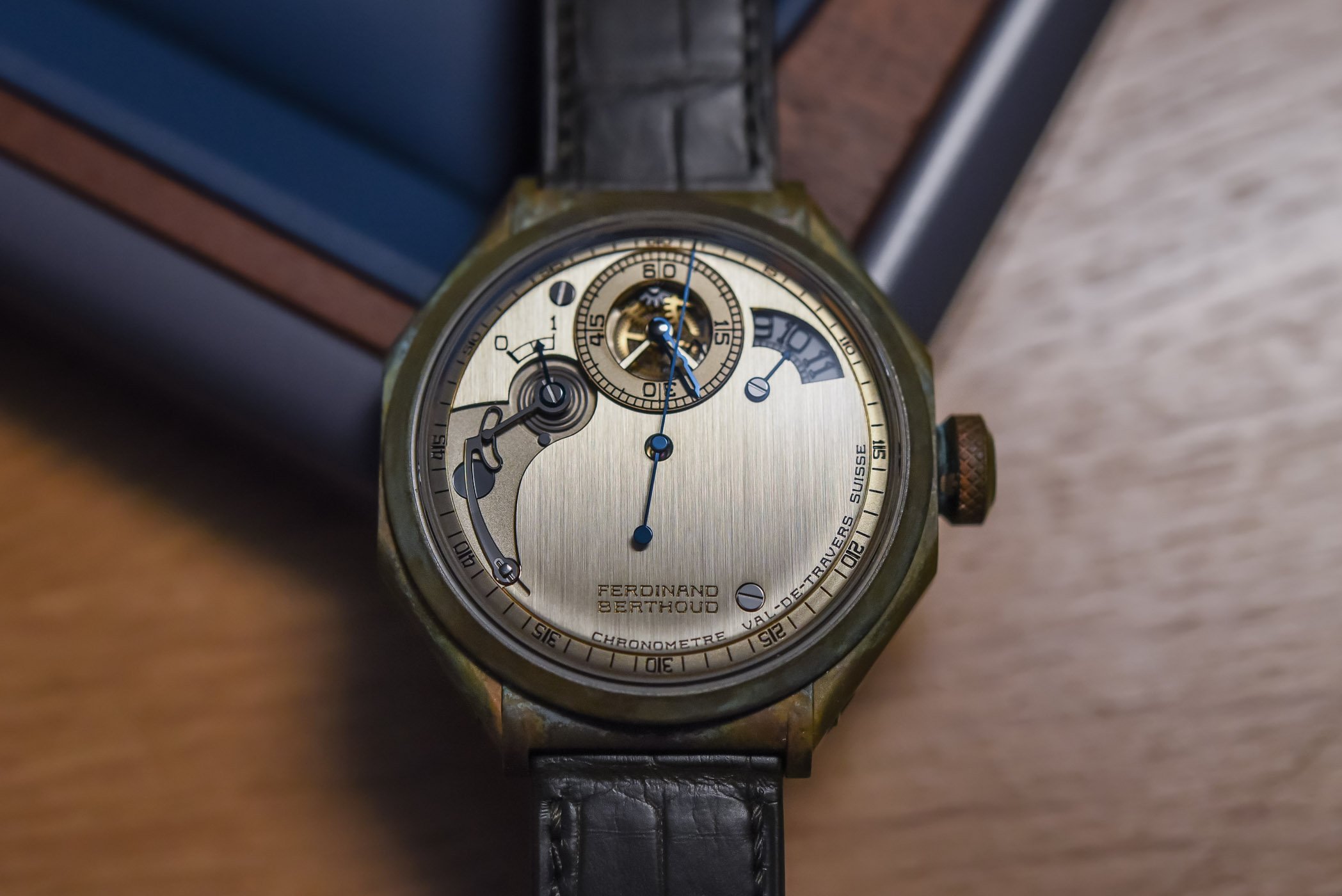
Fifty shades of bronze… Bronze is all the rage these days and used predominantly as a case material for rugged dive watches. Ferdinand Berthoud thought this material could be exploited for a different purpose and has incorporated patinated bronze in its highly technical chronometer watches. At Baselworld 2018, the brand unveiled Edition 1785, five unique pieces of the Chronomètre FB 1R, fashioned out of bronze and featuring different patinas.
The Ferdinand Berthoud Chronomètre FB 1R5 Edition 1785 pays tribute to the expedition of the Astrolabe and Boussole frigates commanded by Lapérouse, appointed by King Louis XVI. Aiming to circumnavigate the globe and complete the Pacific discoveries of James Cook, the two ships left Brest in 1785. Vanishing somewhere in Oceania, between the Salomon Islands and the Vanuatu archipelago in 1788, the frigates sunk along with their precious cargo of five marine chronometers made by Ferdinand Berthoud. As a tribute to the bronze instruments used to measure time at sea of that period, the Edition 1785 watches feature cases crafted in bronze.
Ferdinand Berthoud is considered one of the fathers of the marine chronometer. Born in Switzerland, the master clockmaker was appointed royal clockmaker to the French King and Navy. His marine chronometers allowed France to compete with England and other European countries for supremacy at sea during the age of discovery. To calculate longitude at sea, you need to know the precise time on board and the precise time at your home port, allowing you to convert the difference in time into a geographical separation.
The octagonal 44mm case of the five Edition 1785 timepieces is made of bead-blasted bronze. The result of different ageing processes, each of the cases features a different state of oxidation, producing a different colour ranging from dark brown to green. Bronze oxidises on its outer layer, and its distinctive greenish layer protects the metal from further corrosion. Because it is strong and tough, bronze is mostly used to craft tool watches and is rarely used for high-end watches. The ageing patina, specifically in its most greenish shades, creates a striking contrast – to say the least – with the immaculate finish of the movement.
The five regulator watches, numbered Fb 1R.5-1 to FB 1R.5-5, all feature a different patina, each made using a distinct artificial process. Chosen after numerous trials, these have also been tested for dermo-compatibility in compliance with the European REACH regulations.
These five Edition 1785 watches are based on the FB 1R chronometer presented at SIHH 2018 (read our SIHH article here). The movement is also visible through two portholes on the sides of the case. It is an evolution of the FB1, the jaw-dropping tourbillon and fusée-and-chain chronometer calibre that earned the brand the Aiguille d’Or prize at the GPHG 2016. It no longer features the tourbillon on the dial side and instead features a regulator type display with a central sweep seconds hand, minutes at 12 o’clock and hours through an aperture at 2 o’clock. A sophisticated power reserve indicator with a spiral-shaped spring sets the final touch.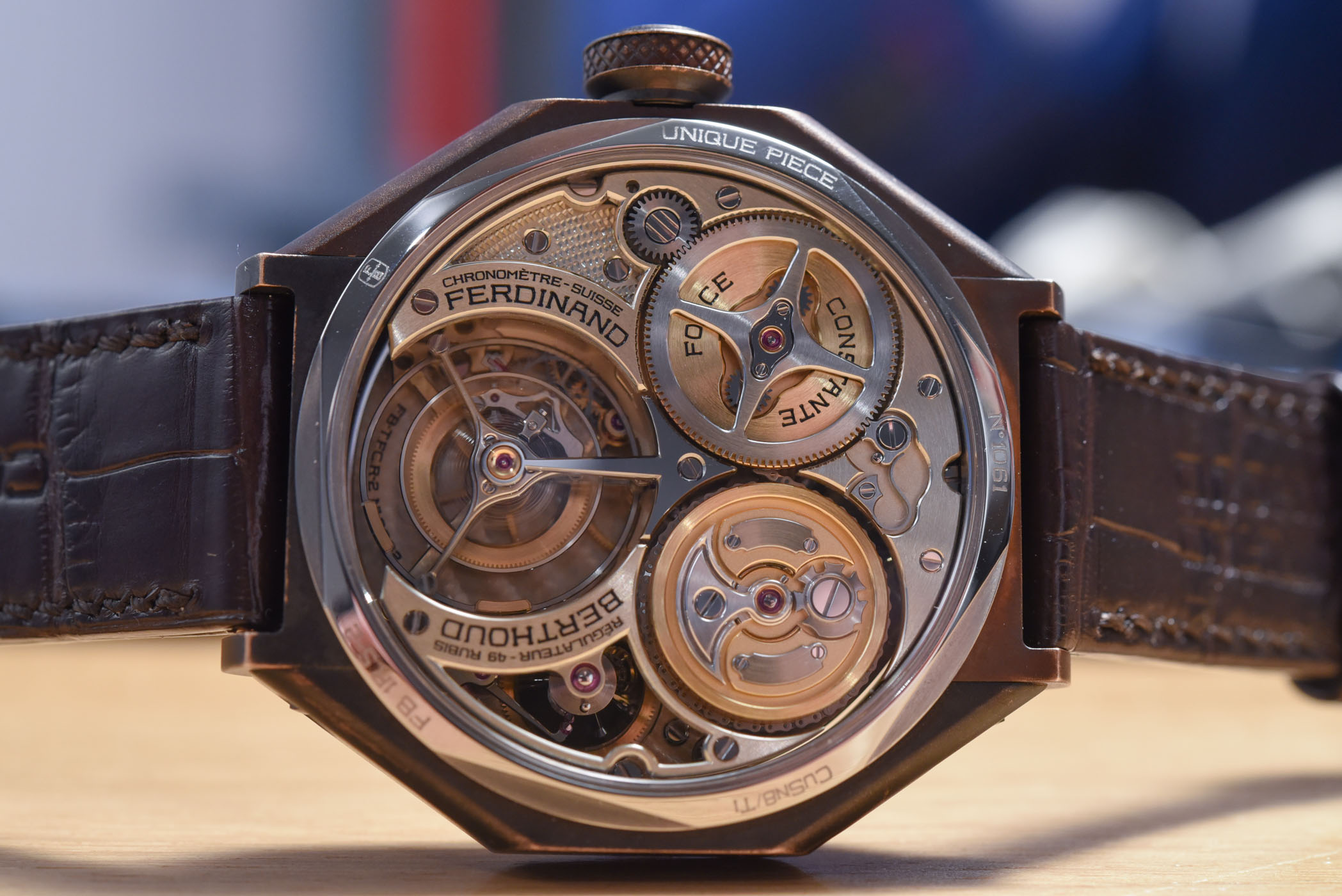
Turning the watch over, the exhibition case back provides a clear view of the spectacular movement with its classic pillar architecture, its tourbillon, its fusée-and-chain and its mobile cone to drive the power reserve indication. The calibre FB-T.FC.R-2 runs at 3Hz and boasts a 53-hour power reserve. It comprises no fewer than 1,153 components – including 790 for the chain. As usual with Ferdinand Berthoud, the finishing is top-notch.
The dial is satin-brushed German silver. The hands are made from different materials with a blued finish: blued gold for the minutes, blued bronze for the seconds, and blued steel for the power reserve indicator. The Ferdinand Berthoud FB1 is worn on a chestnut-brown alligator leather strap, hand-sewn, with an alligator lining and rolled edges. It is secured with a titanium pin buckle.
The price of each version of the Ferdinand Berthoud Chronomètre FB 1R5 edition 1785 is set at CHF 241,500. More details on www.ferdinandberthoud.ch.

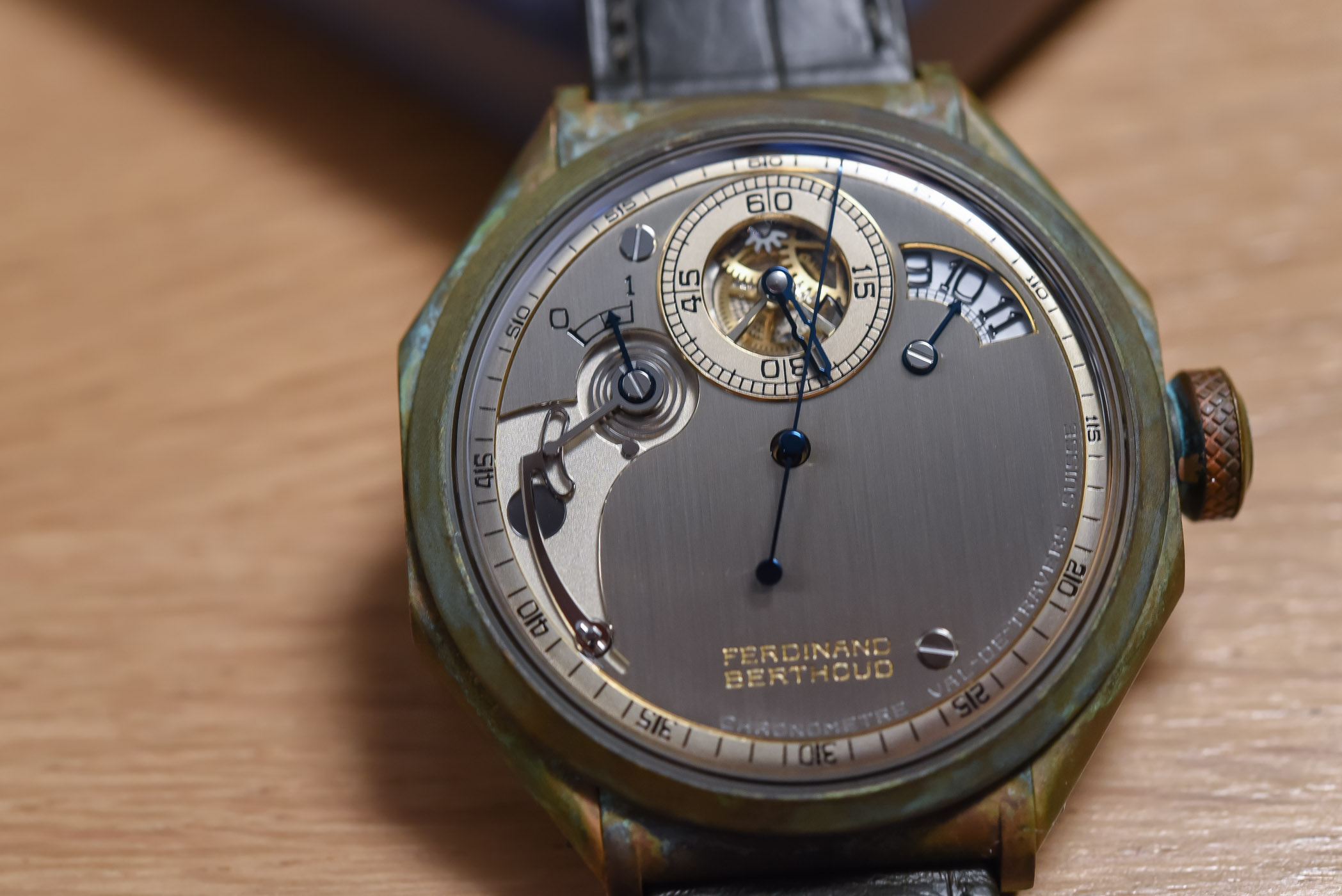
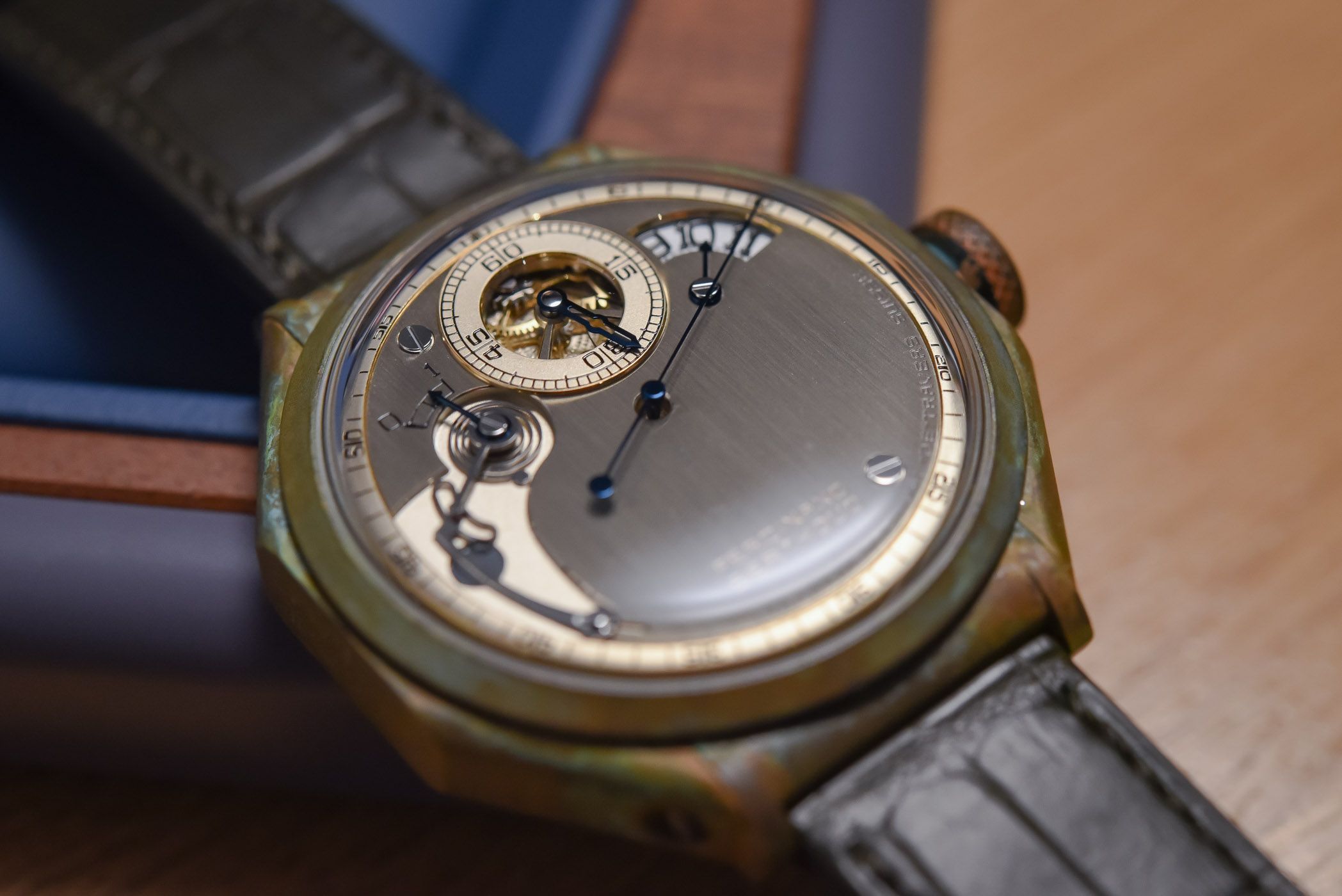
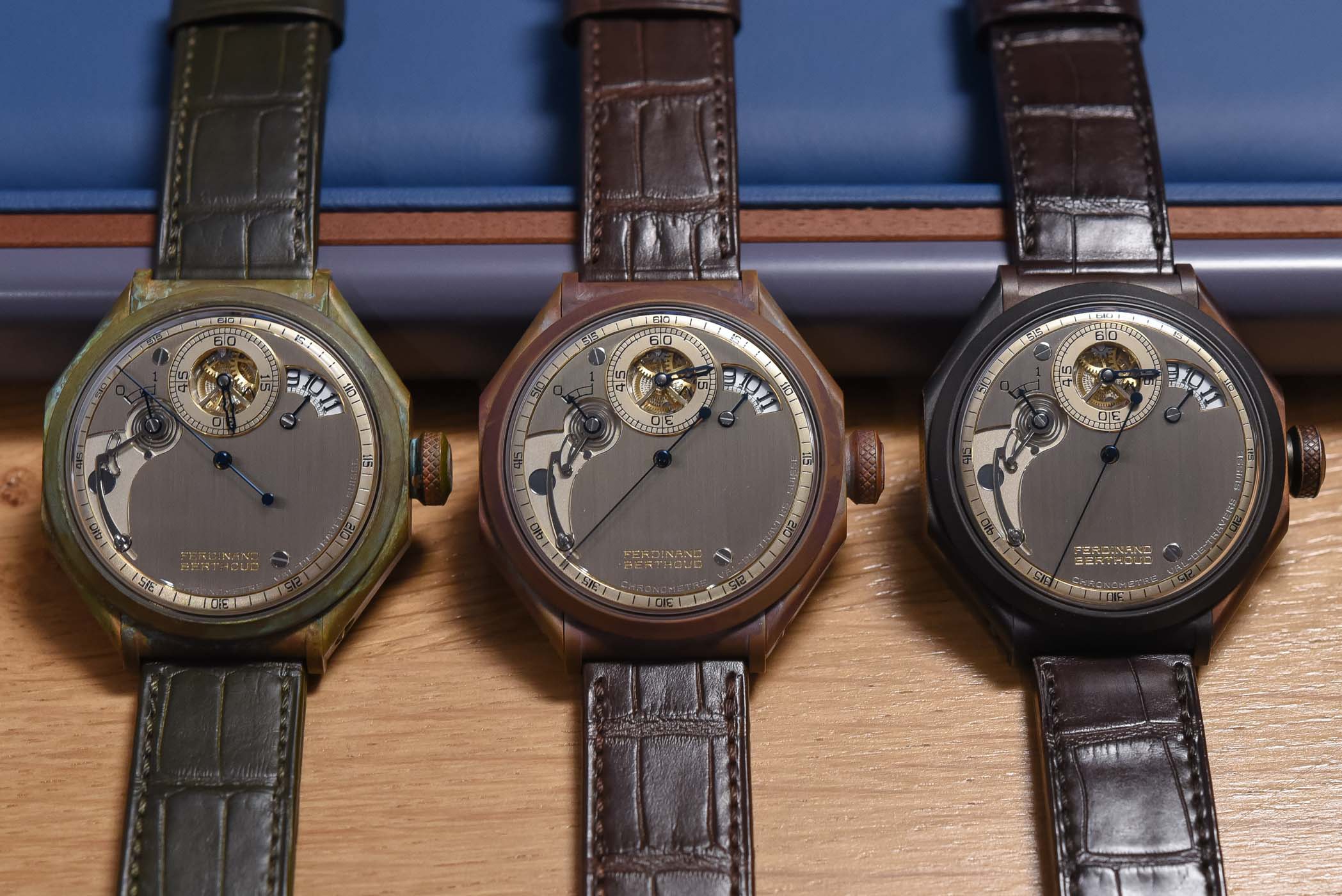
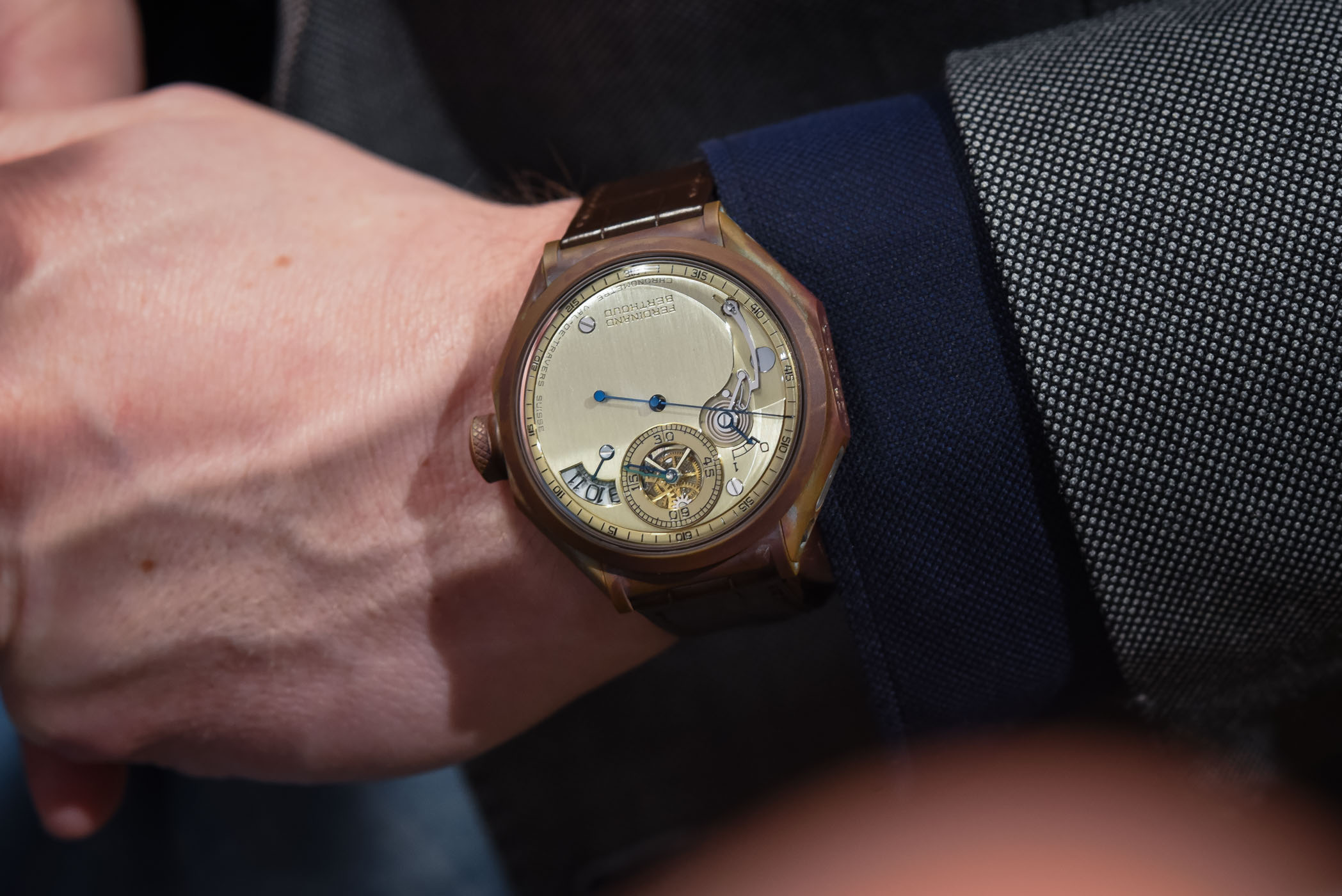
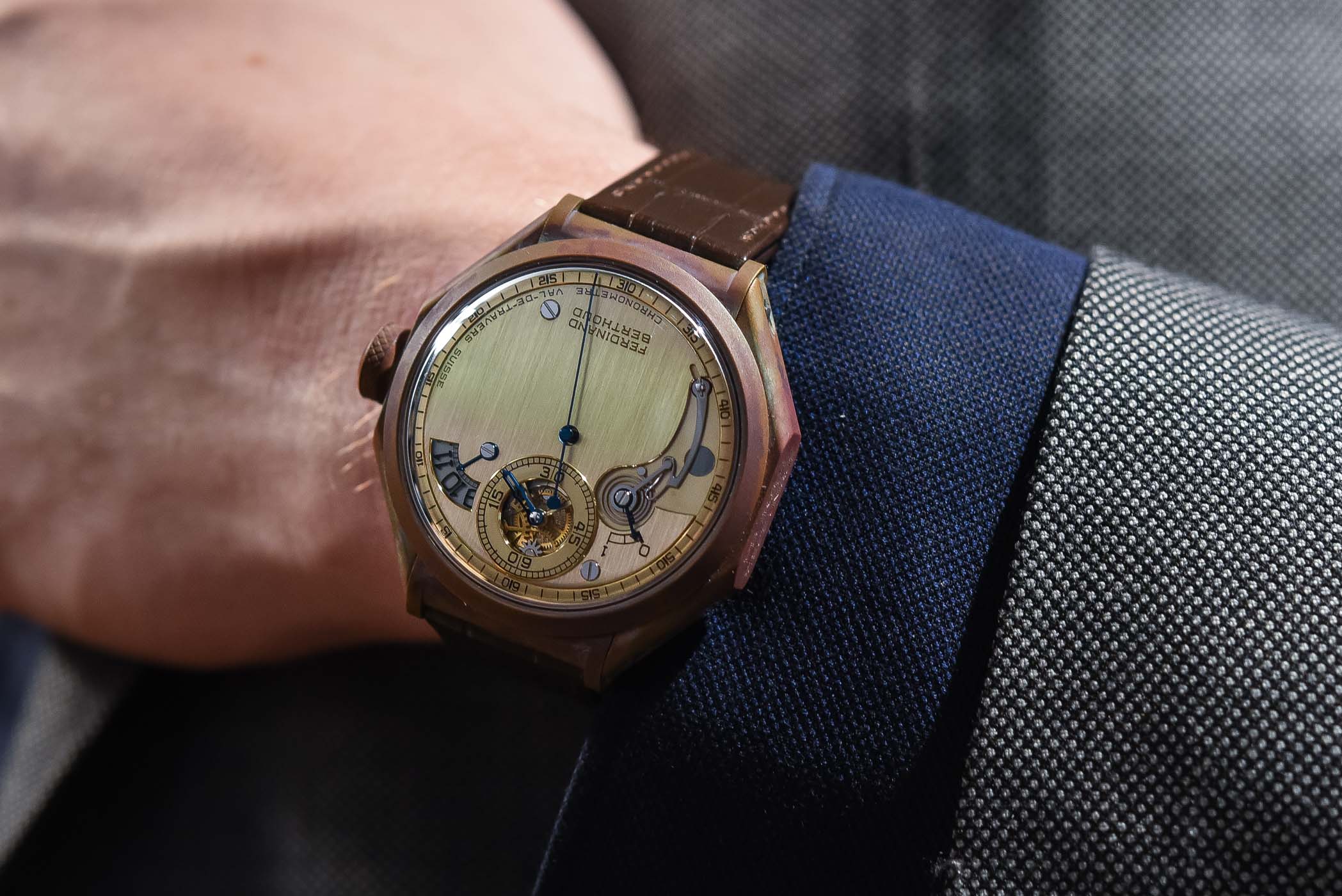



2 responses
A bold material choice!
Not to quibble, but marine chronometers at the time were cases in brass, not bronze. For portable chronometers, silver was the case material of choice … and today, that would certainly be a much rarer and exclusive design choice, and one that also delivers patina over time.